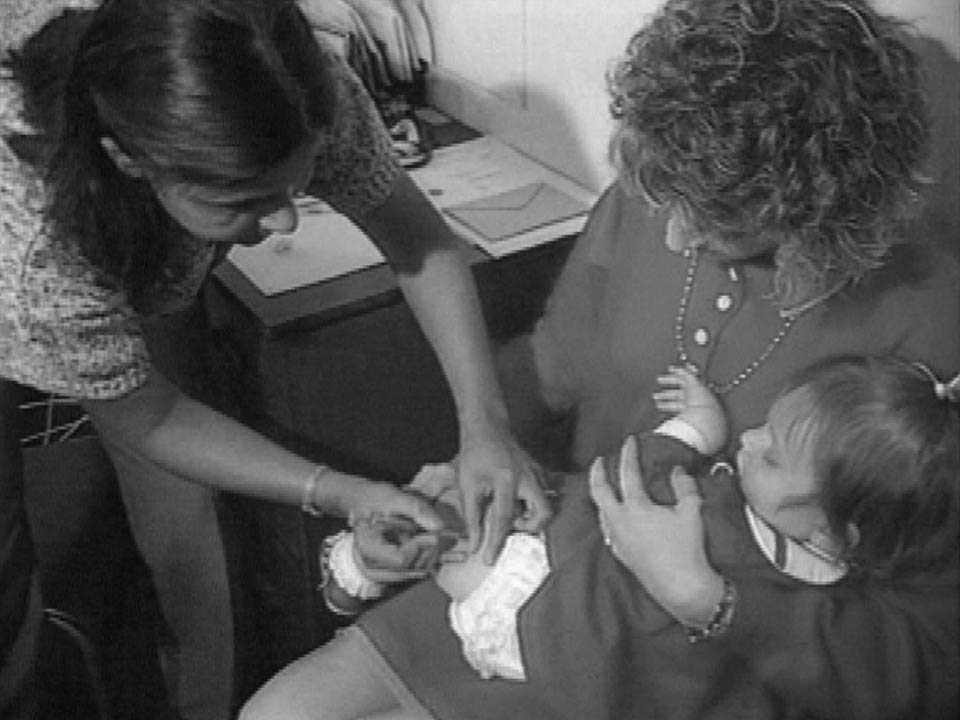MeaslesRubeola

The History of Measles
Measles has shaped human history for centuries, leaving a legacy of devastating outbreaks, scientific discovery, and public health triumphs. The first known differentiation of measles from smallpox came from Persian physician Rhazes () in the 9th century. His descriptions highlighted the characteristic rash and respiratory symptoms that distinguish measles.
Genomic analyses suggest that , which infected cattle, with divergence occurring between the 6th century BCE and the 12th century CE. As human populations grew dense enough to sustain continuous transmission, measles established itself as a strictly human virus.
Measles and Native Populations
Measles epidemics became particularly deadly when introduced to immunologically naive populations. Notable outbreaks include:
- Faroe Islands (1846): .
- Hawaii (1848): .
- Fiji (1875): .
During World War I, . This highlighted the need for infection control measures, many of which influenced later public health responses, including those used during the 1918 influenza pandemic.
A Fraud Keeps Parents from Vaccinating
In 1998, Andrew Wakefield and colleagues published in The Lancet that falsely suggested a link between the MMR (measles, mumps, and rubella) vaccine and autism. The paper, based on a small and , proposed that the vaccine could trigger a new form of autism associated with gastrointestinal disease. The study's claims were widely publicized, fueling public fears and leading to a sharp decline in MMR vaccination rates in several countries. Subsequent investigations revealed that Wakefield had undisclosed conflicts of interest, . His medical license was later , and The Lancet formally retracted the study in 2010. Despite overwhelming scientific evidence refuting the alleged link, the misinformation sparked a lasting wave of vaccine hesitancy, contributing to measles outbreaks worldwide.
Another Island Nation Suffers
In 2019, , primarily among young children. The outbreak was fueled by low vaccination coverage, which had dropped significantly following . Anti-vaccine activists, including Robert F. Kennedy Jr., played a role in exacerbating the crisis by spreading misinformation about the MMR vaccine. . In response, the Samoan government implemented emergency measures, including mandatory vaccinations and temporary shutdowns of non-essential services to facilitate mass immunization efforts. The outbreak underscored the dangers of vaccine misinformation and the importance of maintaining high immunization rates to prevent future epidemics.
Scientific Breakthroughs and Vaccine Development
The modern understanding of measles accelerated in the 20th century. In 1954, , paving the way for vaccine development. , leading to a safer, more effective vaccine in 1968. Key milestones in vaccination include:
- 1963: (killed and live-attenuated versions).
- 1971: (Measles, Mumps, and Rubella) vaccine.
- 1989: .
Widespread vaccination efforts significantly reduced measles cases. Between 2000 and 2020, . However, lapses in vaccination coverage have led to a resurgence in outbreaks, particularly in areas with vaccine hesitancy or limited healthcare access.
Measles as a Disease
Measles, caused by the measles virus (MeV) of the Paramyxoviridae family, is one of the most contagious diseases known. It spreads through airborne transmission, with the virus remaining infectious in the air for up to two hours. The basic reproduction number (R₀) of measles , meaning each infected person can spread the virus to 12–18 others in a susceptible population.
A person with measles four days before the characteristic rash appears, making early transmission difficult to control. They remain infectious until four days after the rash erupts. During this period, coughing, sneezing, or even breathing near others can facilitate rapid spread, especially in crowded or enclosed spaces.
Symptoms
After an incubation period of 10–14 days, symptoms begin with:
- High fever (often exceeding 104°F).
- Cough, runny nose (coryza), and red, watery eyes (conjunctivitis).
- : tiny white lesions on the inner cheeks, appearing before the rash.
- A maculopapular rash that starts on the face and spreads downward, peaking in severity with the highest fever.
Complications
While many recover without incident, :
- Common: Otitis media (ear infection), diarrhea, pneumonia.
- Severe: Encephalitis (1 in 1,000 cases), which can lead to brain damage or death.
- Long-Term: (SSPE), a fatal degenerative brain condition occurring years after infection.
The Role of Vaccination in Prevention
Vaccination is the most effective way to prevent measles. and contributes to . Key strategies to maintain measles elimination include:
- Routine childhood immunization.
- Catch-up vaccination for those who missed doses.
- Surveillance and rapid outbreak response.
- Public education to combat vaccine misinformation.
Despite achieving measles elimination in the U.S. in 2000, . Worldwide, .
Conclusion
Measles remains a global challenge, but history shows that vaccination can turn the tide. By sustaining high immunization rates, addressing misinformation, and ensuring global vaccine access, the world can continue the fight toward measles eradication, protecting future generations from this preventable disease.
Sources and Additional Reading
- Centers for Disease Control and Prevention. "Measles History."
- World Health Organization. "History of Measles Vaccination."
- Perry, R.T., & Halsey, N.A. (2004). "The Clinical Significance of Measles: A Review." The Journal of Infectious Diseases, 189(S1), S4-S16.
- Mayo Clinic. "Measles: Symptoms and Causes."
- European Centre for Disease Prevention and Control. "Measles Annual Epidemiological Report 2023."
- National Library of Medicine. "Comprehensive Analysis of Measles: Virology, Epidemiology, Clinical Presentation, Prevention, and Treatment."
- Shulman ST, Shulman DL, Sims RH. "The Tragic 1824 Journey of the Hawaiian King and Queen to London: History of Measles in Hawaii." The Pediatric Infectious Disease Journal. 2009;28(8):728. doi:10.1097/INF.0b013e31819c9720
- Rosenthal SR, Clements CJ. "Two-dose measles vaccination schedules." Bull World Health Organ. 1993;71(3-4):421-428.
- Tulchinsky TH. "Maurice Hilleman: Creator of Vaccines That Changed the World." Case Studies in Public Health. 2018:443-470. doi:10.1016/B978-0-12-804571-8.00003-2
- Morens DM, Taubenberger JK. "A forgotten epidemic that changed medicine: measles in the US Army, 1917–18." Lancet Infect Dis. 2015;15(7):852-861. doi:10.1016/S1473-3099(15)00109-7
- PENMAN BS, GUPTA S, SHANKS GD. "Rapid mortality transition of Pacific Islands in the 19th century." Epidemiol Infect. 2017;145(1):1-11. doi:10.1017/S0950268816001989
- Klass P, Ratner AJ. "The Sombre Aspect of the Entire Landscape" — Epidemiology and the Faroe Islands. N Engl J Med. 2022;386(13):1202-1205. doi:10.1056/NEJMp2120194
This page was last updated on 16 February 2025. .